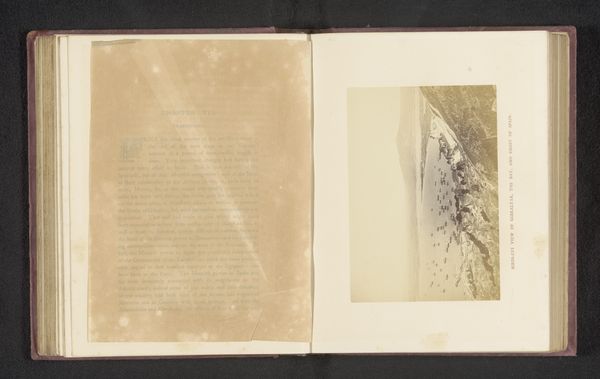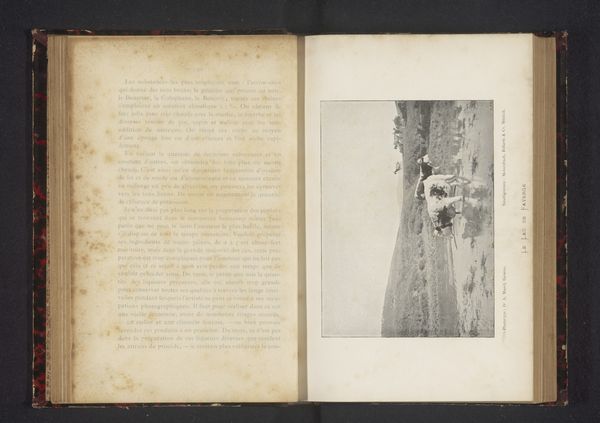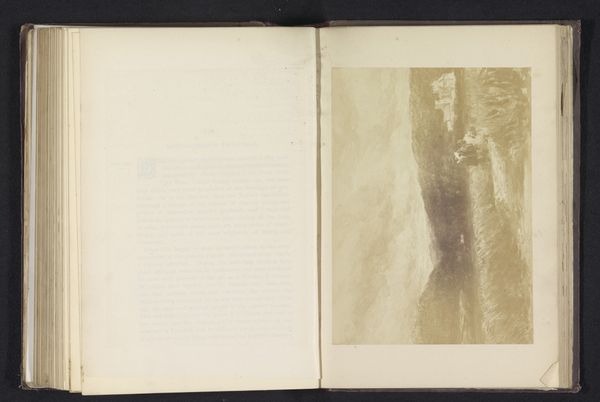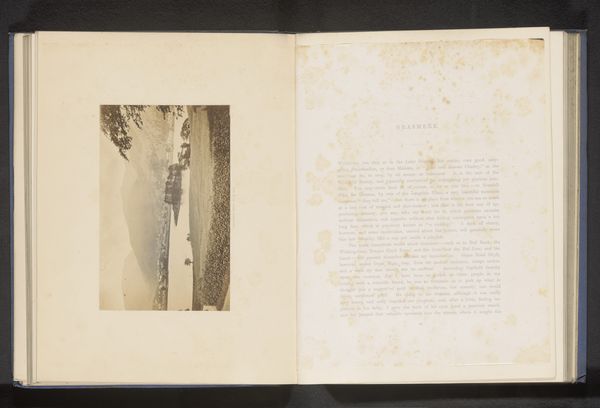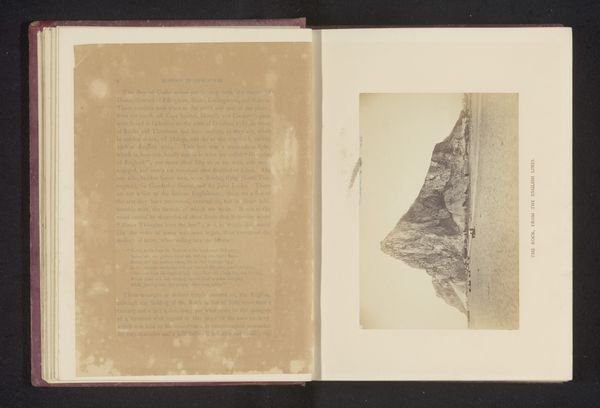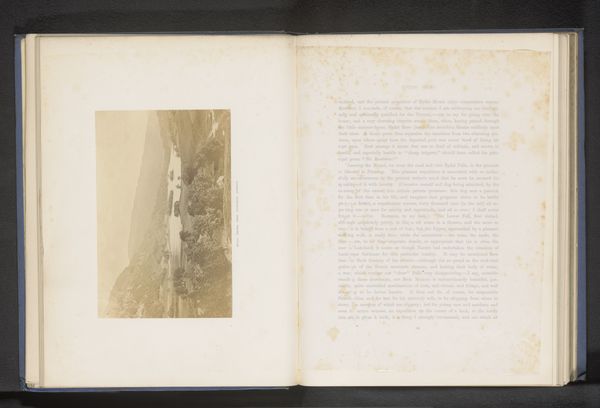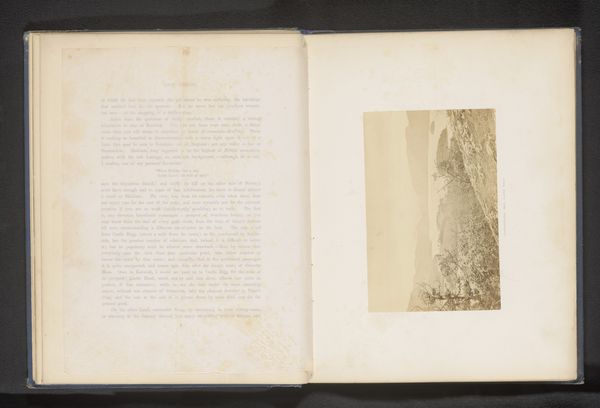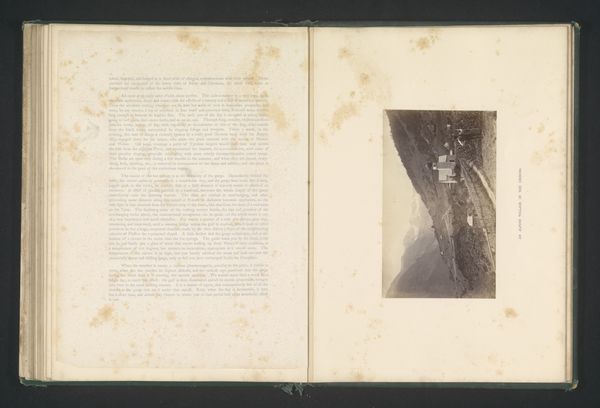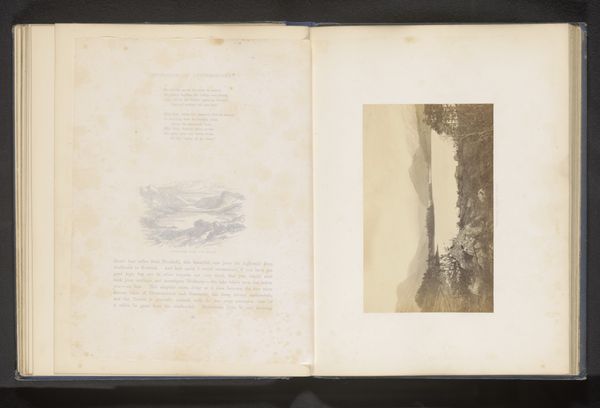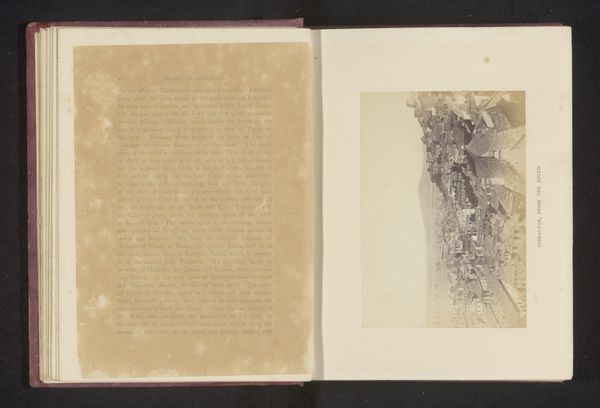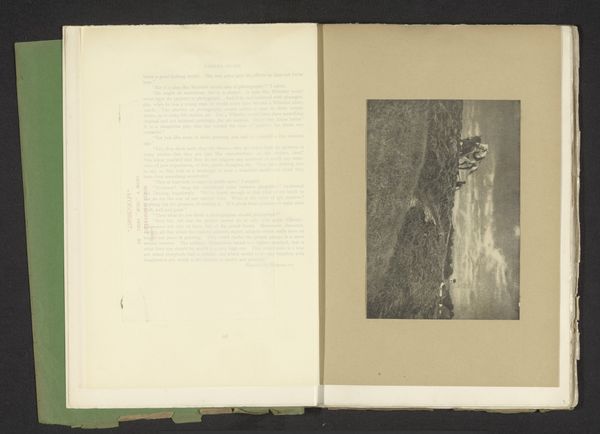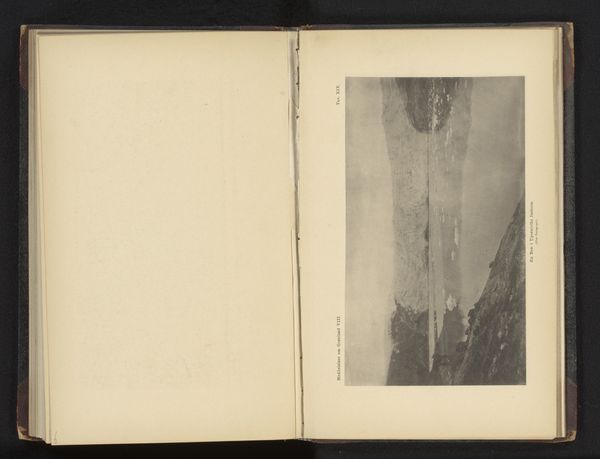
photography, albumen-print
#
aged paper
#
homemade paper
#
paperlike
#
sketch book
#
hardpaper
#
landscape
#
paper texture
#
photography
#
personal sketchbook
#
fading type
#
thick font
#
albumen-print
#
historical font
Dimensions: height 100 mm, width 143 mm
Copyright: Rijks Museum: Open Domain
Editor: This albumen print, "The Landport," dating from before 1870, by J.H. Mann, gives the impression of something caught between presence and absence, like a ghost fading on the page. What can you tell me about it? Curator: Well, consider this within its historical context. Photography at this time was emerging as a tool not only for documentation but also for shaping public perception. This image, presented in what appears to be a bound album alongside descriptive text, suggests a deliberate curatorial choice. What purpose do you think an image like "The Landport" served back then? Editor: Perhaps it was to document architecture or cityscapes, functioning almost like postcards or visual records for a particular audience? Was photography seen as objective, even in landscape work? Curator: Precisely. The rise of photography coincided with increased travel and interest in historical sites. But think about how Mann frames this. It's not a straightforward, objective record. The soft focus, the tonal range... how does that affect our perception? Editor: It seems romantic, or maybe even a little melancholic. Did such approaches risk criticism regarding objectivity? Was manipulation discussed? Curator: Objectivity was, and still is, constantly negotiated! Photographers actively shaped narratives and perceptions, something that remains central today in artistic practices, in photojournalism, even documentary projects. Consider who was able to own and view such photographs, and how that impacted the wider population's understanding. This particular image seems targeted toward a specific elite. Editor: That makes sense. So, it’s less about pure representation and more about carefully crafting a viewpoint. I never thought about it in that way before. Curator: Indeed. Paying attention to these elements of curation reveals a great deal about power structures, how perceptions were historically manufactured, and whose voices were prioritized through visual culture. It is like looking back at what remains "framed". Editor: Looking at this photo within its bound context gave me some great perspective on photography as a whole. I appreciate that!
Comments
No comments
Be the first to comment and join the conversation on the ultimate creative platform.
